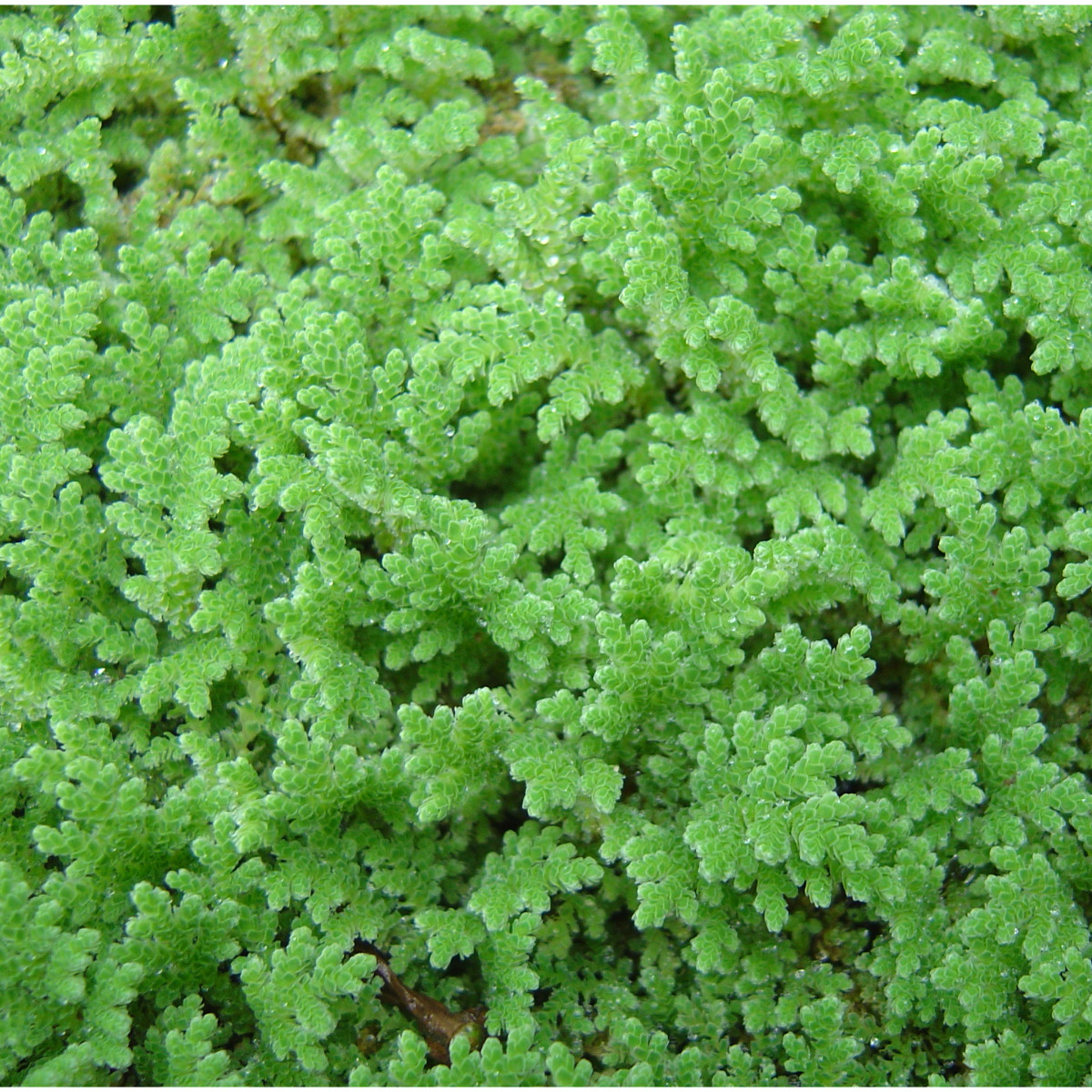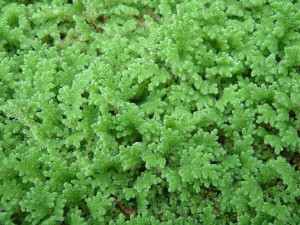Common name: Water Fern, Large Mosquito Fern, Red Water Fern
Family: Azollaceae
Synonyms: Azolla caroliniana Willd.
Azolla rubra R.Br.
Azolla japonica Franch. & Sav.
Azolla arbuscula Desv.
Azolla filiculoides var. rubra Lam. (R.Br.) Strasb.
Azolla magellanica Wild.
Azolla squamosa Molina
Distribution and habitat: Azolla filiculoides is a species of Azolla, native to warm temperate and tropical regions of the Americas as well as most of the old world including Asia and Australia. Azolla filiculoides is a floating aquatic fern, with very fast growth, capable of spreading over lake surfaces to give complete coverage of the water in only a few months. Each individual plant is 1-2cm (0.4-0.8 inch) across, green tinged pink, orange or red at the edges, branching freely and breaking into smaller sections as it grows. It is not tolerant of cold temperatures and in temperate regions it largely dies back in winter, surviving by means of submerged buds.
Azolla filiculoides settles in ponds, ditches, water reservoirs, wetlands, channels and slow flowing rivers. Azolla filiculoides can be found in sunny to shady parts of the water bodies. Through its symbiotic association with Anabaena azollae, the floating fern is able to grow in nitrogen-deficient waters.
Care: Azolla filiculoides are taking care of themselves.
Water: Azolla filiculoides will float freely on still to slow moving fresh water.
Azolla filiculoides can survive within a water pH range of 3.5 to 10, but optimum growth occurs in the pH range of 4.5 to 7 with high nutrient levels.
Light: Azolla filiculoides requires a sunny or lightly shaded position.
Temperature:Azolla filiculoides best grows at 15-26C (59-79F) and the plant will die at temperatures below 10 to 15C (5-14F). Azolla filiculoides is the most frost tolerant of the Azolla species.
This plants are able to survive encasement in ice for at least one week, but those parts of the plants which protruded above the ice, will be killed.
Propagation:Azolla filiculoides has a surface-area doubling time of 7-10 days under favourable conditions. Azolla filiculoides can also propagates through spores and it is sporulates most often between May and November.
Under optimum conditions, Azolla filiculoidess growth spreads across the dam surface until it covers the surface of the water in a dense cover.
Uses: Azolla filiculoides can be used as an ornamental plant in ponds, aquariums and fish tanks.
Azolla filiculoidesis a plant used as water purification and removal of heavy metals nitrogenous compounds.
Notes: Azolla filiculoides is a weed and the plant must be controlled. Azolla filiculoides forms dense mats and out-competes native plant species. These infestations can reduce light levels below the mats and cause die off of water plants and algae and reduce water oxygenation levels with serious impacts on fish and other fauna. Azolla filiculoides can block canals, drains and overflows and may lead to an increased risk of flooding. It is can also affect irrigation systems - both by blocking their water supply and by reducing water quality.
Hardiness Zones: 7a-11
Begonia propagation f...
Essential Nutrients f...
Portulacaria afra
Tillandsia recurvata
Tillandsia stricta
Columnea microphylla
Clivia miniata
Cleyera japonica
Clerodendrum thomsoni...
Cleistocactus strausi...



